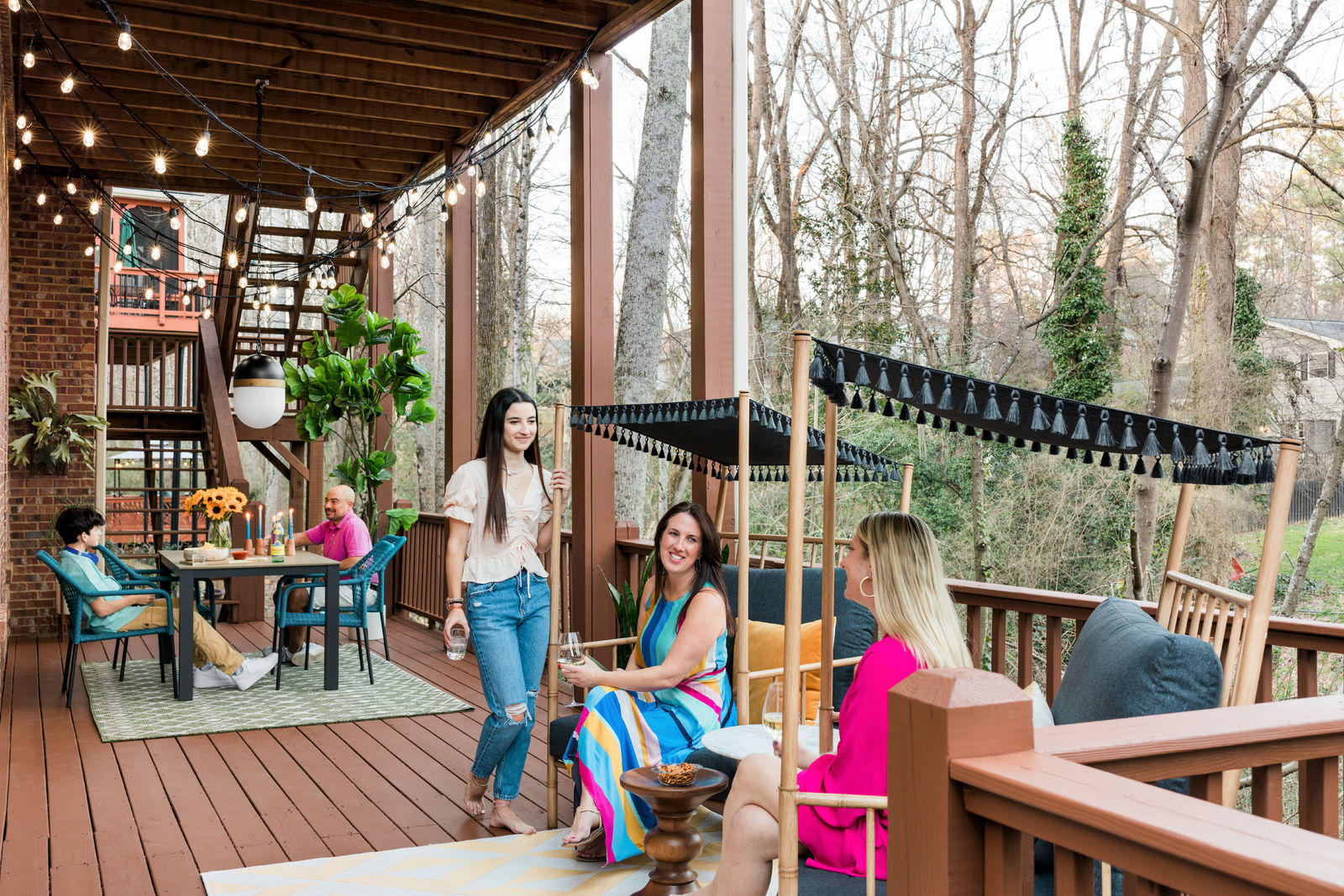HIGHLIGHTS
PROGRAM UPDATES
The AWC Corrects Media Mischaracterization of Wood Construction Think Wood Profiles Top Firms Innovating With Timber The AWC Features New Mass Timber Arena in Popular Video WoodWorks’ Expert Tips Respond to Common Questions The AWC’s Stegner Speaks about Lumber Supply Chain, Mass TimberINDUSTRY NEWS
NYT Documents Rise in Single-Family Rentals Bloomberg Publishes Primer on Carbon Markets Portland Airport to Install Signature Mass Timber Roof Vancouver Firm Looks to Robotics to Accelerate Tall Mass Timber Construction Aside from Starts, Housing Market Ticks UpwardINSIGHTS ON THE COMPETITION
Is Hemp Wood’s Next Competitor? Largest Concrete-Framed, 3D Printed Housing Community Under Development in TexasProgram Updates
The AWC Corrects Media Mischaracterization of Wood Construction
After the Boston Globe’s Real Estate blog ran a piece that included comments critical of wood construction, the American Wood Council (AWC) set the record straight and paved the way for improved perceptions. Working with a local mass timber expert, the AWC submitted a rebuttal, initiated discussion with the Globe’s editorial team to establish the AWC as a resource, and talked with the local fire chief quoted in the article.
In its meeting with the fire chief, the AWC dispelled some minor misperceptions about membrane protection of I-joist and parallel chord truss floors, talked through current fire safety in modular construction, and offered training and resources. Overall, the chief had no serious concerns about wood construction, though the Globe’s piece cast doubt.
The chief was impressed enough with the AWC’s knowledge and expertise that he invited AWC representatives to present on tall mass timber to a building construction class that he teaches at a community college, and he offered to share the AWC’s information with regional fire service organizations for future reference.
Think Wood Profiles Top Firms Innovating With Timber
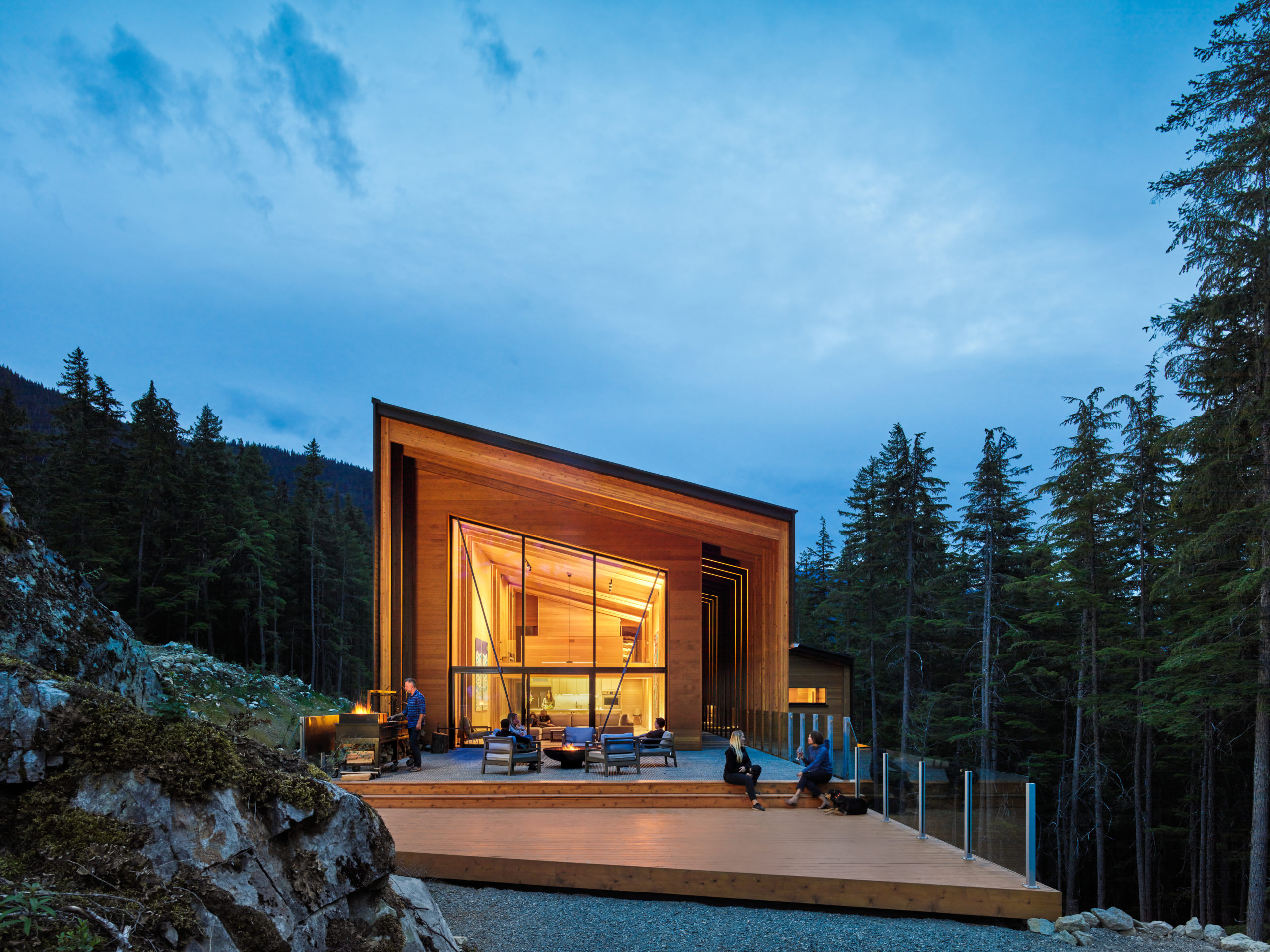
Promoting innovative wood construction by respected architecture, engineering, and construction (AEC) firms has proved to be an effective strategy to engage building material decision makers. Beginning last fall, Think Wood created quarterly Studio Spotlights on influential AEC firms with attention-grabbing wood portfolios, including Patkau Architects, Fast + Epp, and Perkins&Will. The Studio Spotlights have consistently performed well with database contacts, who are more engaged with wood construction and interested in understanding how prominent firms are innovating with mass timber.
The Perkins&Will Spotlight went to 27,811 contacts, with an above-average open rate of 29.9% and click-through rate of 11%. Social promotion generated 240 downloads, and across channels, the spotlight accounted for 23% of downloads in September and October, with a cost per download 36% lower than benchmark.
Upon receiving the Perkins&Will Spotlight, an architect at the global architecture and design firm Gensler reached out to ask Think Wood to feature its work with timber. Working with Gensler’s international PR team, Think Wood published the Gensler Studio Spotlight in November, featuring four innovative timber projects in the company’s portfolio: First United Bank, in Fredericksburg, Texas; Jackson Hole Airport in Wyoming; 2100 Kettner in San Diego, California; and PMX 35, a prototype for the world’s tallest timber tower at 35 stories.

An additional Q&A with Steven Paynter, a Gensler architect, explores Gensler’s interest in mass timber as a climate solution and the firm’s focus on integrating timber into its portfolio to meet internal climate goals.
“The goal is that we stop treating [mass timber] as a niche material and see it as a valid, sustainable material for a broad spectrum of buildings. In the next five years, I would like to see mass timber become ‘the norm’ in design, and by 2030 it should be the first choice of structure in most of our projects below 12 stories. That’s where we need to get to in order to meet Gensler’s climate goals. This has to be the future.” – Steven Paynter
By profiling and gaining support from industry leaders like Gensler, Think Wood positions mass timber to expand beyond a niche market into the mainstream.
The AWC Features New Mass Timber Arena in Popular Video
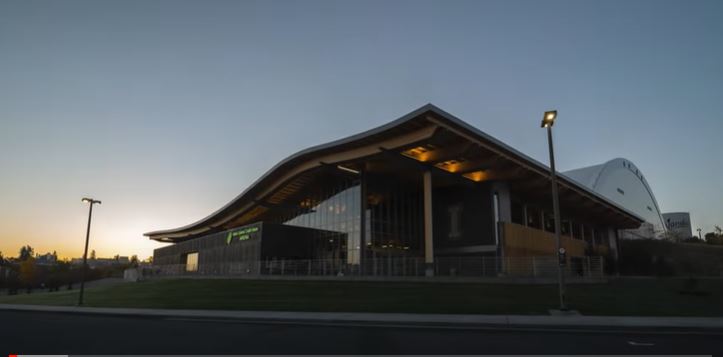
In honor of National Forest Products Week, the American Wood Council released a video highlighting the University of Idaho’s recently completed mass timber basketball arena. The video weaves in the industry’s carbon story and highlights unique attributes of the project, including local and sustainable sourcing, job creation, and pride in place and identity. The building is an aesthetic masterpiece, and it elicited powerful reactions from those attending its recent grand opening.
The AWC promoted the video in correspondence to its member companies and on social media; thus far, it has garnered more than 40,000 views on YouTube.
WoodWorks’ Expert Tips Respond to Common Questions
In addition to providing project support and education, the development of technical content is critical to solidifying and maintaining WoodWorks’ role as a trusted source for the design and construction community. Content on its website is wide-ranging—from case studies and solution papers to an Expert Tips section that gives detailed responses to specific questions or areas of misunderstanding. This month, WoodWorks added three tips to the page to tackle common queries related to light-frame and mass timber:
- What are the fire-resistance rating and material requirements for elements supporting vertical offsets in exterior walls?
- What is the impact of wood stud size and spacing on the fire-resistance and acoustical performance of a wall assembly? Can stud sizes and spacing be altered from those in tested wall systems?
- Do small holes and penetrations in mass timber floor panels always require reinforcing? Are there guidelines for when the panel is adequate without supplemental framing?
Written by WoodWorks’ technical staff, tips are used to support project assists and are promoted through e-marketing and social media. There are currently 60 Expert Tips available at woodworks.org.
The AWC’s Stegner Speaks about Lumber Supply Chain, Mass Timber
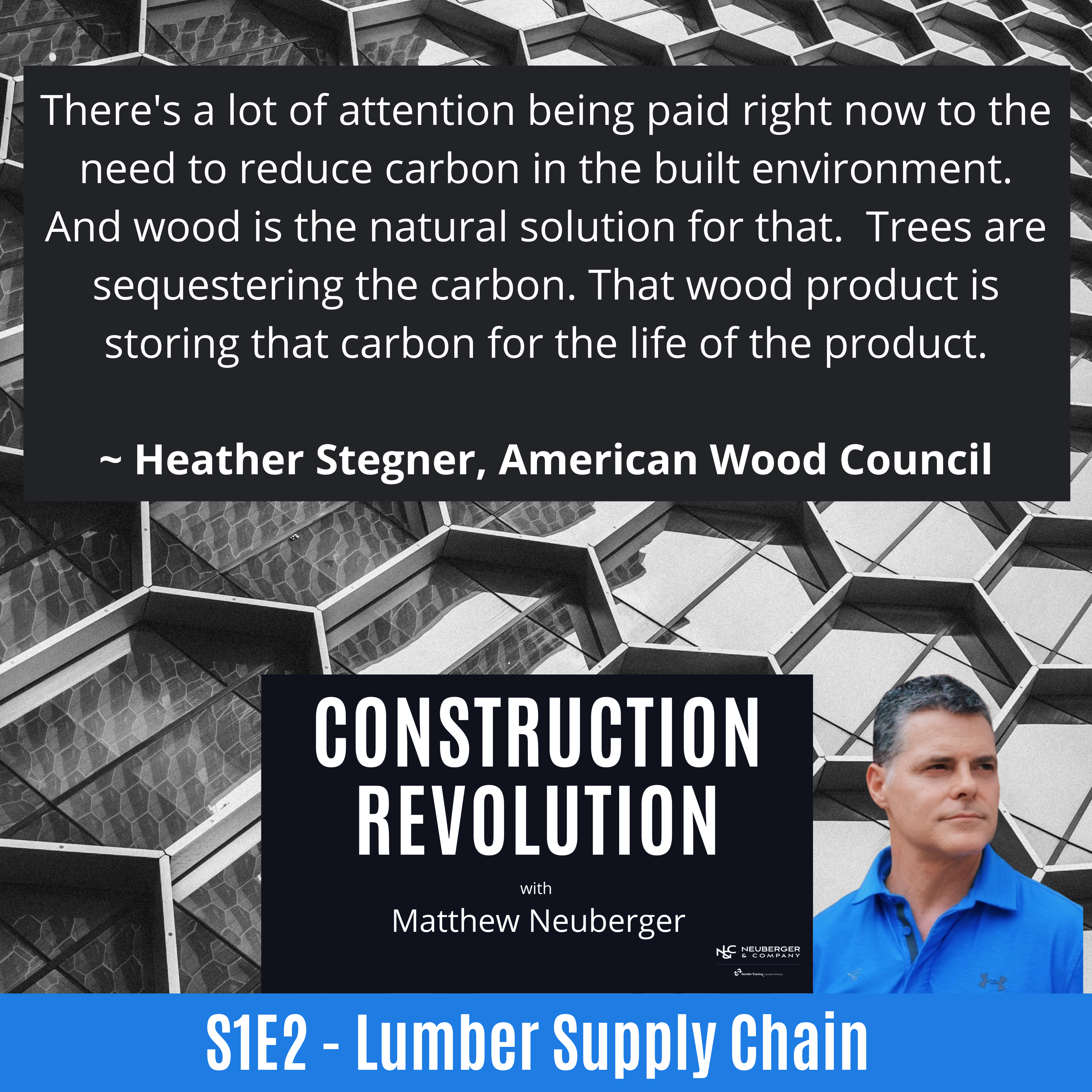
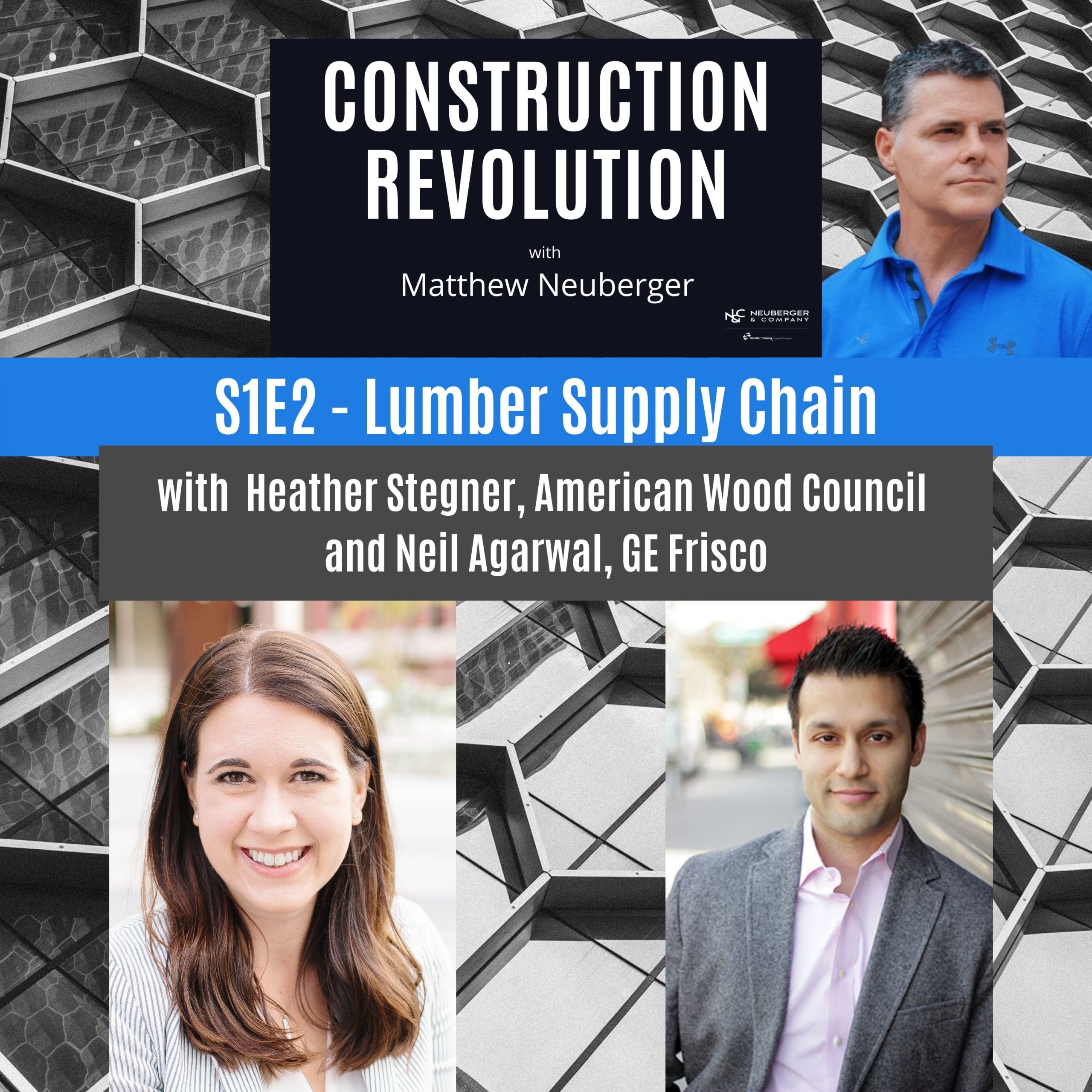
The AWC’s Heather Stegner shared her knowledge and expertise about the lumber supply chain during a recent interview on the new Construction Revolution podcast, which is geared toward helping those in the construction industry build long-term success in business. In addition to discussing the long-term capacity effects of the Great Recession, Stegner also shared the exciting innovations and carbon storage potential of wood products. Listen to the podcast here or watch it on YouTube.
Industry News
NYT Documents Rise in Single-Family Rentals
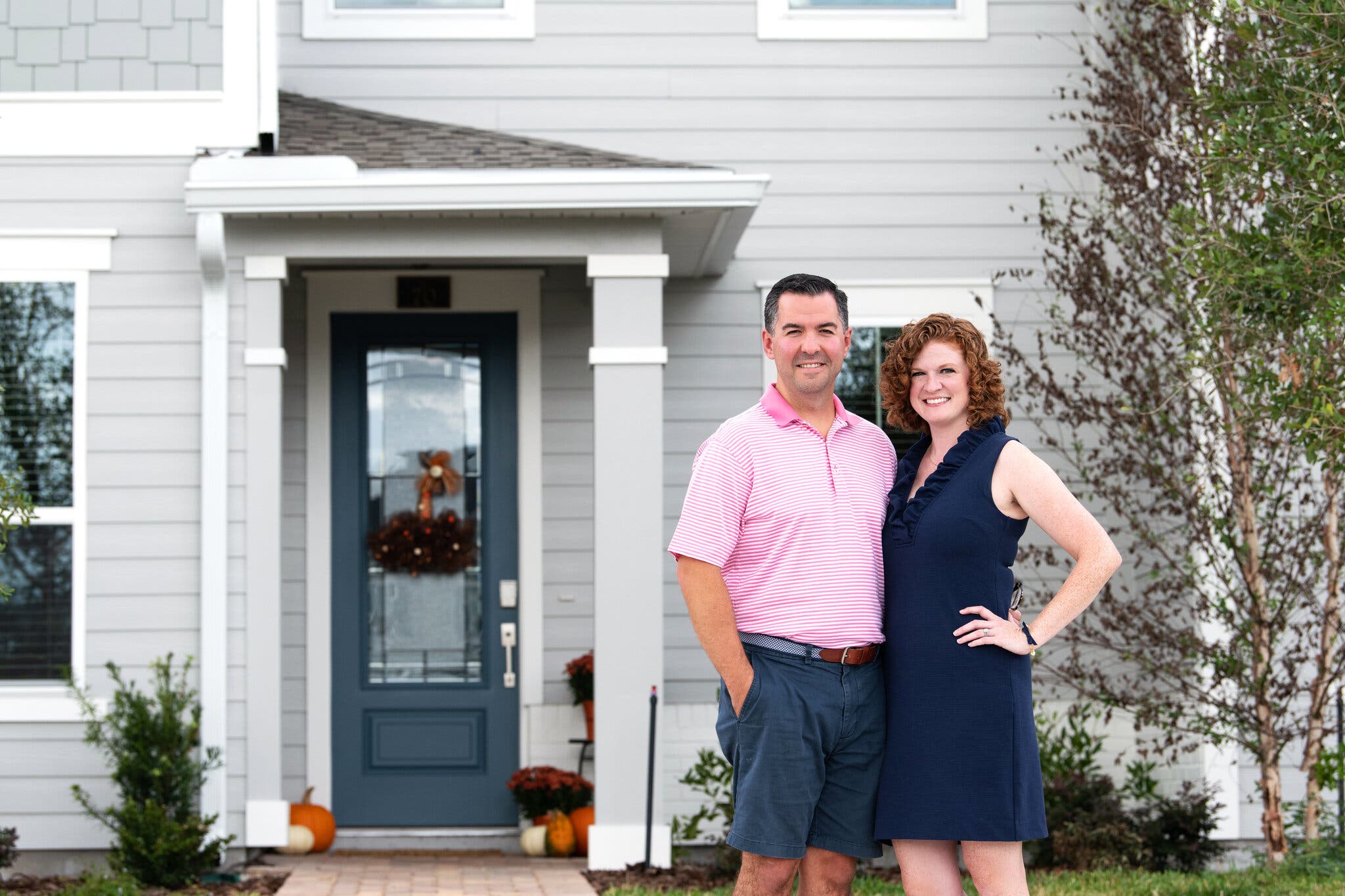
The New York Times recently covered the rapid rise of the single-family built-to-rent housing market, whose stock of new inventory increased 30% from 2019 to 2020 alone. Single-family built-to-rent housing currently makes up 35% of all U.S. rentals and 6% of all new housing built. This latter number is expected to double in the next decade, making it the fastest growing sector in the U.S. housing market.
While currently satisfying consumer demand for affordable, maintenance-free living against a backdrop of low inventory and skyrocketing housing prices, the Times notes that the segment’s meteoric rise foretells a downside for consumers—a lack of wealth building. Housing has historically been the most direct path to build wealth for Americans, and many new and replacement homebuyers simply cannot compete with the purchasing power of institutional buyers. Some analysts predict that this lost opportunity to build equity and wealth will have longstanding negative consequences for consumers and perpetuate the shift toward renting, which may only exacerbate the housing crisis. As an outcome of the study commissioned by the Programs Working Group earlier this year, the SLB will continue to observe the trend of build-to-rent and position positively wood through communications for this sector.
Read more from The New York Times here.
Bloomberg Publishes Primer on Carbon Markets

Against the backdrop of the recently completed COP26 climate negotiations in Scotland, Bloomberg published a primer in The Washington Post on how carbon markets function. To date, more than 60 jurisdictions have adopted carbon pricing instead of regulations. Hailed by many as a free-market alternative, carbon pricing is not without its doubters and critics. Bloomberg reviews how carbon pricing works; its prevalence and effects on behavior, including, for example, a faster transition to natural gas in Europe; recent developments, including China’s engagement in a carbon market for its power sector; and oppositional views.
Read more about carbon markets here.
Portland Airport to Install Signature Mass Timber Roof
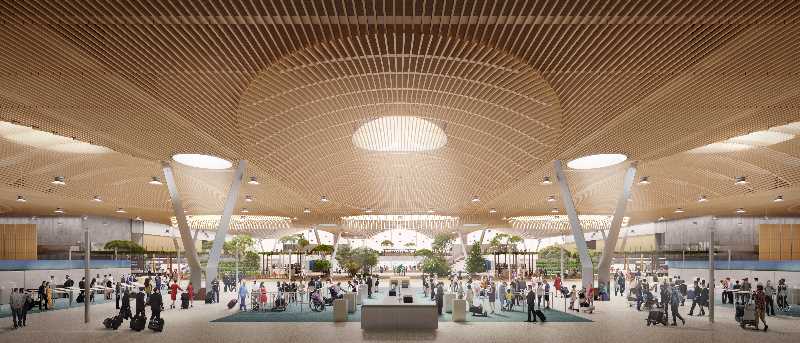
The Portland International Airport (PDX) will soon welcome an architectural masterpiece to its newly overhauled main terminal—a massive, 392,000-square-foot mass timber roof, peaking at 54 feet tall at its center. The new roof is being assembled as 20 120′x110′ modules and will be installed in situ in the summer of 2022 while the airport operates beneath.
PDX’s new roof is expected to make Oregonians proud because the roof’s glulam beams were manufactured in Eugene by Zip-O Laminators, and another Oregon firm, Timberlab, executed the computer numerical control profiling to ensure perfect connections between the beams and supporting steel frame. The roof’s beams and mechanical features will be covered with a Douglas Fir lattice.
Portland authorities chose mass timber for its performance, local connections, aesthetics, and seismic stability, and modular construction to accommodate construction and operational space constraints. PDX expects its airport rebuild will be finished in 2025.
Read more about the project here.
Vancouver Firm Looks to Robotics to Accelerate Tall Mass Timber Construction
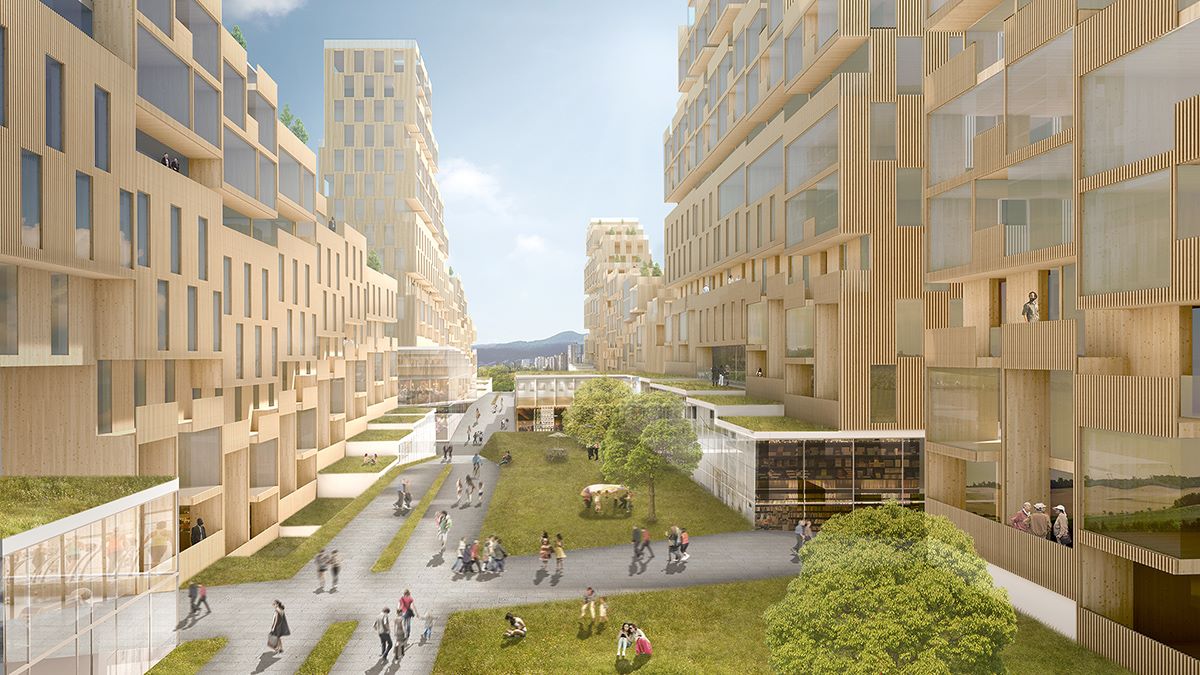
Treehugger recently featured the cutting-edge technology and robotics used by Vancouver-based Intelligent City to optimize mass timber multifamily housing construction and achieve cost-effective, carbon-neutral buildings.
According to Intelligent City, “we developed a parametric mass timber building platform for six- to 18-story mixed-use urban housing compliant with new mass timber high-rise regulation in Canada and the U.S. This market segment was selected because of its potential for a healthy urban density between low-rise sprawl and high-rise concrete. At this height, mass timber buildings excel not only because of their structural performance and fire safety, but because they enable an urban typology that is dense enough for public infrastructure to be economically feasible, and low enough to promote resilient communities and connectedness.”
Read more about Intelligent City’s housing innovations here.
Aside from Starts, Housing Market Ticks Upward

NAHB’s Eye on the Economy recently reported rises in new home sales, single-family builder sentiment, and existing home sales, the latter of which is at an eight-month high despite sparse inventory. Median home prices are also up nearly 19% from one year ago, which continues to frustrate many prospective buyers.
Housing starts ran counter to these trends, with single-family starts holding flat and overall starts dipping slightly because of a 5% decline in multifamily starts of five or more units.
NAHB noted the ongoing supply chain challenges to the housing sector and overall economy and expects these will persist through 2022. These shortages are having a direct impact on pricing, with material costs up 14% compared with one year ago. After surging earlier this year, lumber prices are down 62% from their highest point but are showing signs of increasing again.
Read more from NAHB here.
Insights on the Competition
Is Hemp Wood’s Next Competitor?
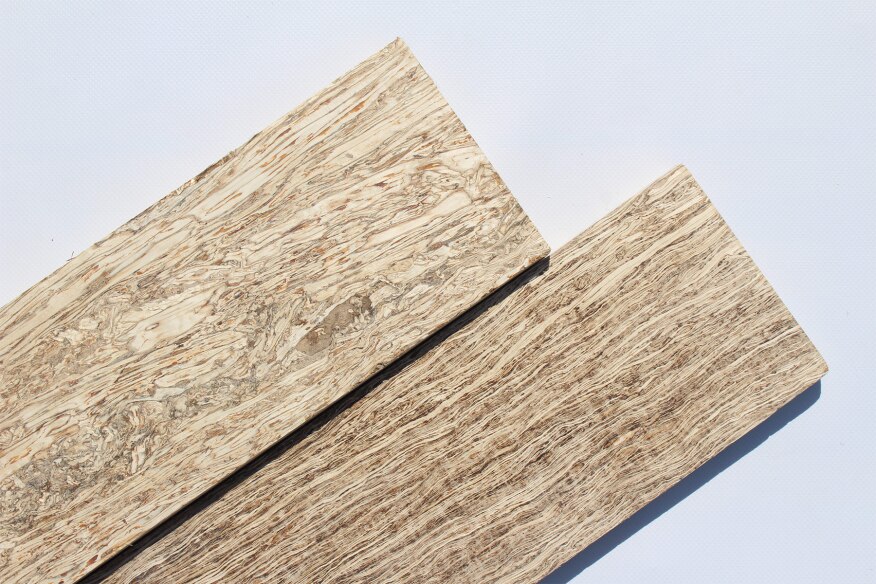
Blaine Brownela, an architect and materials researcher, recently reviewed the comparative benefits of engineered hemp products as a substitute for wood in building and interior applications. Hemp boasts higher carbon capture than wood and faster cultivation times—hemp can be cultivated to maturity in three to four months, 100 times faster than an oak tree (60 times faster than a softwood tree).
Leveraging information from the wood products industry, hemp manufacturers are now creating wood alternatives, such as HempWood, through reverse engineering wherein hemp fibers are subjected to high heat and then compressed into molds using wood glue. The product is a hardwood-like material that mimics wood’s strength, exceeds its carbon performance, and offers comparable benefits in terms of rural economic development and renewability.
Read more about the growth of hemp as a building material here.
Largest Concrete-Framed, 3D Printed Housing Community Under Development in Texas
Homebuilding firm Lennar Corp. and construction-technology company Icon have announced plans for a new 100-unit, 3D printed housing development near Austin, Texas, which is set to become the largest ever 3D printed development in the United States. The homes will be built around concrete framing, rather than wood, and, at 2,000 square feet each with an estimated cost per square foot of around $400, can be manufactured in a week using an on-site crew of three workers. The average construction time to build a new single-family home is typically seven months.
Lennar and Icon are optimistic that 3D printing can sidestep the ongoing supply chain challenges and labor shortages affecting the U.S. housing market and that the new development will spark increased consumer demand for 3D printed housing.
Read more about the development here.
Industry Resources
FEA’s Housing Dashboard
This housing dashboard is provided compliments of the forest Economic Advisors (FEA):
View the October Dashboard
Virginia Tech's Monthly Housing Report
This monthly housing commentary report is a free service of Virginia Tech and is intended to help one gauge future business activity in the U.S. housing market.
September 2021 Reports (released in November 2021)
Part A: September Housing Commentary
Part B: September Economic Conditions


